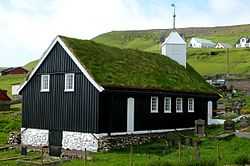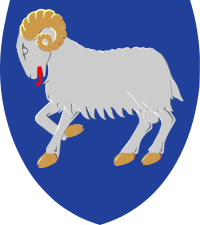Religion in the Faroe Islands


Religion in the Faroe Islands consists largely of the Lutheran Church of the Faroe Islands, but also includes smaller Protestant groups such as the Open Brethren and the Jehovah's Witnesses, as well as a few Catholics and adherents of non-Christian religions.
The Faroe Islands, located between Scotland and Iceland, are partly ruled by Denmark, and as such the people long practiced the same religion as the Danes although religious observance is nowadays more widespread and intense among the Faroese.
The Faroe Islands became Christianized between 850 and 1000. Evidence exists for conversions by Celtic missionaries as early as 850, but Roman Christendom did reach the islands by the latter year. The Færeyinga saga is often cited with respect to the early spread of Christendom in the islands. The saga states that the king of Norway told Sigmund to go by ship to the Faroe Islands with orders from the King. Sigmund's orders were clear: he was supposed to make the 18 small islands Christian, which is what he did, according to the saga. This event is believed to have taken place around 1000, but the Faroese did not establish an organised congregation adherent to Roman concepts before around 1100, so there do appear to be some inconsistencies in the saga.
Originally belonging to Norway, Faroe fell under the jurisdiction of Denmark in 1523. The last Catholic Bishop of the Faroe Islands was Amundur Olavson; he was replaced by the first Lutheran bishop, Jens Gregersøn Riber, in 1540 .
If counted separately, the charismatic movement is the third-largest religious group in the islands.
Today the Catholic Church is an extremely small minority. There are also small groups of Seventh-day Adventists, Jehovah's Witnesses, Ahmadi Muslims and Bahá'ís in the country.
See also
| ||||||||||||||||||
| |||||||||||||||||||||||||||||||||||||||||||
